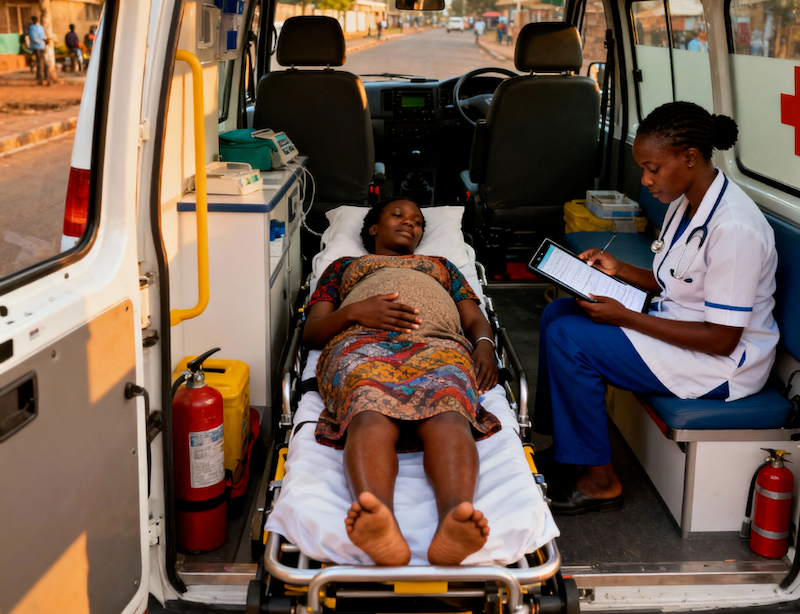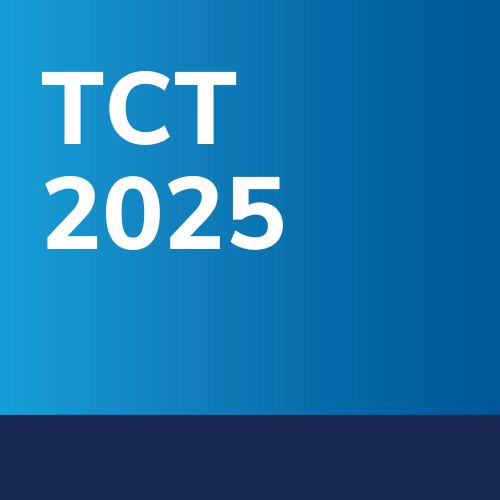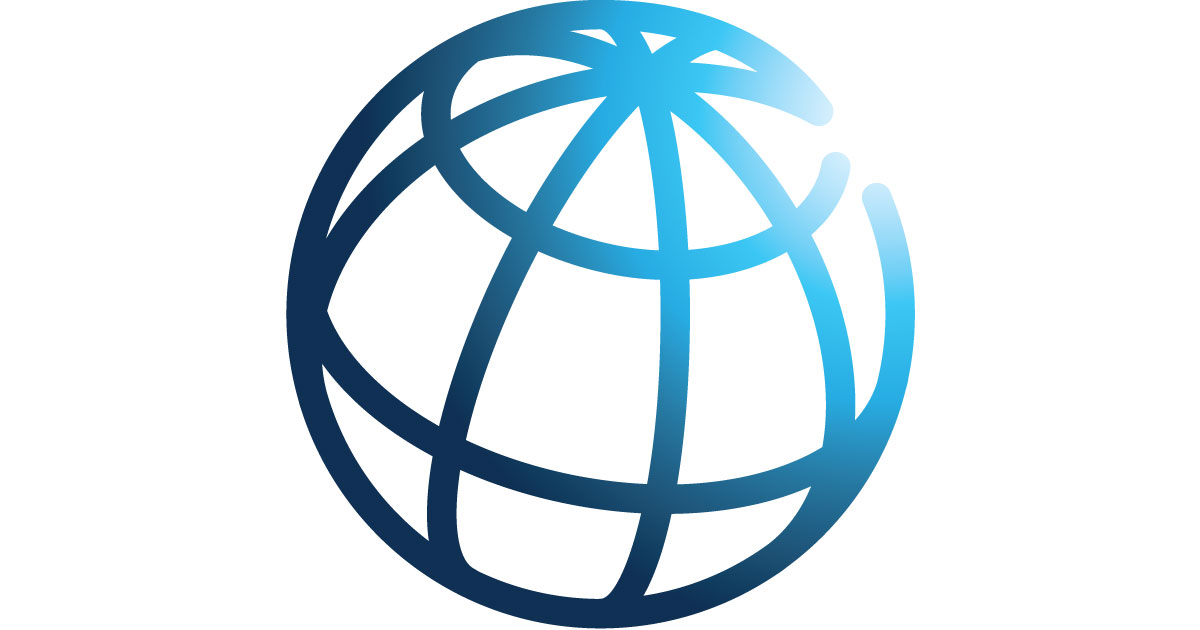Researchers have discovered how newly created neurons depend on blood flow in the adult brain to travel from their site of origin to their final location.
The study in mice, published today in eLife as the final Version of Record…

Researchers have discovered how newly created neurons depend on blood flow in the adult brain to travel from their site of origin to their final location.
The study in mice, published today in eLife as the final Version of Record…

Globally, about 280,000 women lost their lives due to pregnancy-related complications in 2020 []. In addition, the latest report indicates that the global newborn mortality rate remains high, with 2.3 million newborns dying every year within the first 28 days of life []. A report by the United Nations Inter-Agency Group for Child Mortality Estimation (UN IGME) highlighted that the 10 countries with the highest rates of global maternal deaths, stillbirths, and newborn deaths are primarily located in low- and middle-income countries (LMICs) in Central-Southern Asia and Sub-Saharan Africa [,].
To improve and standardize medical care during pregnancy and childbirth, the essential obstetric care (EOC) framework was introduced in 1997. This was updated in 2009 to include basic neonatal resuscitation [-] and has since evolved into the emergency obstetric and newborn care (EmONC) framework, which targets major direct obstetric complications and neonatal asphyxia as the primary newborn complication []. Although technical guidelines for adopting EmONC exist [,], LMICs continue to face challenges in its implementation, usage, and coverage, resulting in stagnated progress in global maternal and neonatal mortality reduction since 2010 [,,,]. The data further emphasize the urgent need for innovative strategies to prevent maternal and neonatal deaths in these regions.
Low-cost and context-specific digital health interventions (DHIs) could offer potential solutions to improve EmONC and address preventable causes of maternal and neonatal deaths in such settings [,]. Classifying DHIs by their intended purpose helps researchers and stakeholders better prioritize and use these technologies in this field. Using the World Health Organization (WHO) Classification of Digital Interventions, Services, and Applications in Health (CDISAH), DHIs can be classified into four groups according to their targeted primary users: (1) DHIs for persons, (2) DHIs for health care providers, (3) DHIs for health management and support personnel, and (4) DHIs for data services []. The classification can facilitate more effective integration of DHIs into health care systems by clarifying which specific functions within EmONC service delivery are intended to be addressed. For example, technologies such as wearable sensors and devices to track the health of mothers, fetuses, and newborns [,] can be categorized as person-focused DHIs, specifically serving the purpose of personal health tracking.
Furthermore, recent reviews of DHIs in maternal and child health suggest a growing use of digital technologies to support care for mothers and children in LMICs [,,-]. The majority of these interventions have focused on improving antenatal care access and participation, as well as promoting newborn immunization and breastfeeding as preventative measures []. Mobile health (mHealth) approaches [], such as text messaging and smartphone apps in particular, have been shown to effectively boost antenatal care attendance and improve the timeliness of childhood immunizations in LMICs [,]. This indicates positive progress in adapting technologies in this field, although the number of studies on DHIs in antenatal care conducted in LMICs still lags behind those in high-income countries []. In addition, while these studies predominantly focus on antenatal care in preventing maternal and neonatal complications, they offer limited insight into how DHIs can support the full spectrum of EmONC.
In general emergency contexts, DHIs can improve care delivery and emergency response management in remote regions, such as through telemedicine to receive specialist consultations [] or e-learning platforms and virtual simulations to improve health care providers’ skills without formal training []. Several scoping reviews have explored the use of DHIs in relation to specific emergency obstetric and neonatal contexts in LMICs, such as investigating the role of DHIs in triaging obstetric emergencies in maternity units [], supporting pregnant women at high risk of pre-eclampsia and eclampsia [], and managing neonatal emergency care []. Horiuchi et al [] specifically reviewed 35 studies and found that e-learning platforms and mobile apps were commonly used tools for neonatal resuscitation training in LMICs. However, these reviews focused on improving maternal and neonatal emergency care services independently, treating them as different areas of focus. It is important to recognize that maternal emergencies, such as hemorrhage or eclampsia, can have direct consequences for the newborn, and vice versa. Therefore, adopting a comprehensive approach during labor, delivery, and the immediate postpartum period is more effective and efficient [].
To our knowledge, no literature review has comprehensively explored the use of digital technologies for improving EmONC services, specifically in low-resource settings. The EmONC functions shall be understood as a continuum of care that connects maternal and newborn health, along with routine care and management of complications [], highlighting the need for these components to be addressed in an integrated manner. Therefore, this scoping review aims to (1) systematically explore existing literature to identify the key features and functionalities of DHIs for improving access to and quality of EmONC services implemented in resource-poor settings and (2) analyze barriers to and advantages of implementing such interventions in similar settings.
A scoping review approach was used due to the heterogeneous and emerging nature of research on DHIs aimed at enhancing the quality of and access to EmONC in LMICs []. This review was conducted following the methodological framework for scoping studies by Arksey and O’Malley [], the updated Joanna Briggs Institute Methodology for Scoping Reviews [,], and the PRISMA-ScR (Preferred Reporting Items for Systematic Reviews and Meta-Analyses Extension for Scoping Reviews) standards []. The protocol for this scoping review was registered on the Open Science Framework [].
We included studies that described the application of digital technologies to enhance access to and quality of EmONC, published up to November 2024. All types of published primary study designs (randomized controlled trial [RCT], non-RCT, quasi-RCT, cohort, case-control, and qualitative studies). Project protocols, conference abstracts, and studies without full-text availability were excluded. There were no language restrictions as long as an English translation could be obtained. According to the Joanna Briggs Institute guidelines for scoping reviews, the Population-Concept-Context framework was used to formulate the research question and define the eligibility criteria:
We searched the following 3 databases: PubMed, Web of Science, and the Cochrane Library. Search strategies using keywords and Medical Subject Headings terms were developed in consultation with a librarian to meet the specified criteria. The primary keywords used were “Digital health interventions” combined with “Emergency obstetric and newborn care” and “Low- and middle-income countries” (refer to for detailed search strategies for each database). We used the Rayyan (Robert Ayan of Rayyan Systems) software [] for duplicate removal, as well as title and abstract screening. Two reviewers (NPS and INH) independently assessed the studies against their eligibility criteria—initially by titles and abstracts, followed by full-text screening of those that met the criteria. Before formal screening, the eligibility criteria were piloted on a sample of 10 titles and abstracts to ensure agreement. Any disagreements were resolved through discussion between the first author (NPS) and the senior team member (NK). In addition, we searched the reference lists of selected studies and gray literature using Google advanced search and focused queries on company websites and professional organizations to locate relevant reports, guidelines, and non–peer-reviewed materials. The supplementary searches applied the same search query to identify additional documents that fulfilled all inclusion criteria.
Data extraction was conducted using Microsoft Excel following a predetermined data extraction form. The 2 reviewers (NPS and INH) independently extracted the following data: first author name, publication year, study design, country, setting, study aims, name and type of the DHIs implemented, duration of implementation, key findings regarding the usefulness, and barriers and advantages associated with the intervention. The extracted data were summarized descriptively and categorized based on the types of DHIs according to the WHO CDISAH classification and their intended user groups. Studies were classified as “exclusive” if they solely delivered digital interventions and “blended” if digital technology was used alongside other methods. Thematic analysis was applied to categorize the limitations of implementing DHIs in this field. Attempts were made to obtain unclear or incomplete data by emailing the investigators. Finally, all extracted data items were analyzed and categorized by the first author, and the results were verified by the last author.
The study quality assessment was conducted by NPS and INH using the 2018 version of the Mixed Methods Appraisal Tool—a tool designed to evaluate the quality of qualitative, quantitative, and mixed methods studies []. Disagreements were resolved between the 2 reviewers. In the 2018 version, authors were advised against presenting an overall score and were encouraged to clearly explain how the appraisal results were interpreted and applied in the review to ensure transparency.
A total of 824 studies were identified from 3 databases after the initial search, with 672 remaining after duplicate removal. After title and abstract screening, 619 studies were excluded, and the full texts of the 53 remaining studies were reviewed for eligibility. Following a critical appraisal based on the inclusion and exclusion criteria, 31 studies were selected for data extraction. Furthermore, 2 additional studies were included, one identified through citation searching and another retrieved from gray literature searching, bringing the total number of studies to 33 ().
These studies were conducted in 18 countries (), with the majority of the studies taking place in India (n=5) and Ethiopia (n=4). The remaining studies were conducted in 16 LMICs across Africa (Ghana, Uganda, Liberia, Mozambique, Congo, Rwanda, Guatemala, Kenya, Tanzania, Nigeria, and Malawi), South Asia (Bangladesh and Pakistan), and the Americas (Mexico, Guatemala, and Colombia). In terms of intervention types, 21 studies addressed both obstetric and neonatal emergency care interventions, 7 studies focused exclusively on obstetric emergency care, and 5 studies focused on neonatal emergency care only. Thirteen studies reported DHIs combined with nondigital interventions, such as face-to-face mentorship or training programs, while the remaining studies exclusively used digital interventions. and include a detailed summary of the included studies. The study quality appraisal indicated that most of the quantitative descriptive studies had some issues with sampling, either because the sample did not match the target population or the sampling method used was inadequate ().

| Author | Intervention name | Country | Study settings | Study population | Study design |
| Okonofua et al [] | Text4Life (Centre of Excellence in Reproductive Health Innovation, University of Benin) | Nigeria | PHCs in rural areas | Pregnant women | Pre-post study |
| Jabeen et al [] | Digital EmONC register | Bangladesh | District hospitals (secondary-referral services) and subdistrict hospitals (primary-referral services) | HCWs, policymakers, facility managers, and statisticians | Implementation research |
| Gass et al [] | Call center | India | PHCs in low-resource, geographically vast setting | Post-partum women and newborns | Prospective cohort study |
| Ngabo et al [] | RapidSMS–Maternal and Child Health (UNICEF and the Rwanda Ministry of Health) | Rwanda | PHCs and hospitals in rural areas | HCWs | Pilot study |
| Amoakoh et al [] | mHealth Clinical Decision-Making Support Intervention (mCDMSI) | Ghana | PHCs and hospitals | HCWs | Cluster RCT |
| von Dadelszen et al [] | Pre-eclampsia Integrated Estimate of Risk on the Move (PIERS-POM) app combined with Community-Level Interventions for Pre-eclampsia (CLIP; Mark Ansermino and Peter von Dadelszen) | Mozambique, Pakistan, and India | PHCs and communities | HCWs | Individual participant data meta-analysis of cluster RCT |
| Chiweza et al [] | Artificial Intelligence (AI) augmented Continuous Electronic Fetal Monitoring (CEFM; Perigen Inc) | Malawi | Hospital | HCWs | Pilot study |
| Escobar et al [] | Telehealth combined with an educational model (Fundación Valle del Lili [FVL]) | Colombia | A tertiary high-complexity care hospital and a second-level hospital in a resource-limited region | HCWs | Descriptive ecological study |
| Oduro-Mensah et al [] | Call center | Ghana | PHCs and hospitals in urban areas | HCWs | Longitudinal time series routine data analysis |
| Ononge et al [] | Emergency Call and Dispatch Center (ECDC) with Kampala Digital Emergency Transport System (KDETS) mobile app | Uganda | PHCs and hospitals in urban slum communities | HCWs | Mixed method study |
| Lee et al [] | Mobile Obstetric Emergency System (MORES; WhatsApp Inc) | Liberia | Rural health facilities (RHFs) and hospitals | HCWs | Pre-post study |
| Tuti et al [] | The Life Saving Instructions for Emergencies (LIFE) app (Jakob Rossner) | Kenya and other low-income countries | PHCs and hospitals | HCWs and health care students | RCT |
| Bolan et al [] | Safe Delivery App (SDA; Maternity Foundation and Universities of Copenhagen and Southern Denmark) | Congo | PHCs and hospitals | HCWs | Mixed method feasibility study and pilot cluster-RCT |
| Klokkenga et al [] | SDA | Ghana | Hospitals in rural areas | HCWs | Cluster RCT |
| Lund et al [] | SDA | Ethiopia | PHCs and hospitals in rural areas | HCWs | Cluster RCT |
| Thomsen et al [] | SDA | Ethiopia | PHCs and hospitals in rural areas | HCWs | Qualitative study |
| Christiansen et al [] | SDA | Ethiopia | PHCs and hospitals in rural areas | HCWs | Cluster RCT |
| Nishimwe et al [] | SDA | Rwanda | Hospitals in urban and rural areas | HCWs | Pre-post study |
| Nishimwe et al [] | SDA | Rwanda | Hospitals in urban and rural areas | HCWs | Pre-post study |
| Nishimwe et al [] | SDA | Rwanda | Hospitals in urban and rural areas | HCWs and stakeholders | Mixed method study |
| Yigzaw et al [] | Shorter, blended-learning approach (face-to-face classroom with online instruction) | Ethiopia | PHCs | HCWs | Quasi-experimental study |
| Walker et al [] | PRONTO simulation and team training (PRONTO International) | Mexico | Hospitals | HCWs | Pilot study |
| Walker et al [] | PRONTO simulation and team training | Guatemala | PHCs | HCWs | Pre-post study |
| Morgan et al [] | PRONTO combined with Emergency Maternal and Neonatal Care Preparedness (AMANAT) | India | PHCs in urban and rural areas | HCWs | Qualitative study |
| Creanga et al [] | PRONTO-AMANAT | India | PHCs in urban and rural areas | HCWs | Pre-post study |
| Ghosh et al [] | PRONTO-AMANAT | India | PHCs in urban and rural areas | HCWs | Pre-post study |
| Miller et al [] | PRONTO combined with The East Africa Preterm Birth Initiative (PTBi-EA) | Kenya, Uganda | PHCs and hospitals | HCWs | Pre-post study |
| Umoren et al [] | electronic Helping Babies Breathe (eHBB; Rachel Umoren and Chris Paton) app and virtual reality (VR) simulations | Nigeria and Kenya | Secondary and tertiary hospitals in urban and semiurban areas | HCWs | RCT |
| Ndwiga et al [] | Digital EmONC Learning and Training Assistant (DELTA) with mentoring program (Jacaranda Health and WhatsApp Inc) | Kenya | PHCs and hospitals in informal settlements | HCWs | Mixed method study |
| Nyamtema et al [] | Accessing Safe Deliveries in Tanzania (ASDIT; Tanzanian Training Centre for International Health) | Tanzania | PHCs in rural areas | HCWs | Prospective cohort study |
| Mbaruku et al [] | M-communication and non-pneumatic anti-shock garment (NASG) | Tanzania | PHCs and hospitals in rural areas | HCWs | Mixed method study |
| Akhter et al [] | Blood Information Management Application (BIMA) | Bangladesh | A tertiary hospital and 2 proximate licensed blood banks | HCWs | Qualitative study |
| Rahman et al [] | BIMA | Bangladesh | A tertiary hospital and 2 proximate licensed blood banks | HCWs | Pre-post study |
aPHC: primary health care center.
bEmONC: emergency obstetric and newborn care.
cHCW: health care worker.
dmHealth: mobile health.
eRCT: randomized controlled trial.
| Author | Intervention name | Barriers to DHI implementation | Study outcome |
| Okonofua et al [] | Text4Life (Centre of Excellence in Reproductive Health Innovation, University of Benin) |
|
|
| Jabeen et al [] | Digital EmONC register |
|
|
| Gass et al [] | Call center |
|
|
| Ngabo et al [] | RapidSMS–Maternal and Child Health (UNICEF and the Rwanda Ministry of Health) |
|
|
| Amoakoh et al [] | mHealth Clinical Decision-Making Support Intervention (mCDMSI; Mark Ansermino and Peter von Dadelszen) |
|
|
| von Dadelszen et al [] | Pre-eclampsia Integrated Estimate of Risk on the Move (PIERS-POM) app combined with Community-Level Interventions for Pre-eclampsia (CLIP) |
|
|
| Chiweza et al [] | Artificial intelligence augmented Continuous Electronic Fetal Monitoring (CEFM; Perigen Inc) |
|
|
| Escobar et al [] | Telehealth combined with an educational model (Fundación Valle del Lili [FVL]) |
|
|
| Oduro-Mensah et al [] | Call center |
|
|
| Ononge et al [] | Emergency Call and Dispatch Center (ECDC) with Kampala Digital Emergency Transport System (KDETS) mobile app (Population Services International Uganda and Kampala Capital City Authority) |
|
|
| Lee et al [] | Mobile Obstetric Emergency System (MORES; WhatsApp Inc) |
|
|
| Tuti et al [] | The Life Saving Instructions for Emergencies (LIFE) app (Jakob Rossner) |
|
|
| Bolan et al [] | Safe Delivery App (SDA; Maternity Foundation along with the Universities of Copenhagen and Southern Denmark) |
|
|
| Klokkenga et al [] | SDA |
|
|
| Lund et al [] | SDA |
|
|
| Thomsen et al [] | SDA |
|
|
| Christiansen et al [] | SDA |
|
|
| Nishimwe et al [] | SDA |
|
|
| Nishimwe et al [] | SDA |
|
|
| Nishimwe et al [] | SDA |
|
|
| Yigzaw et al [] | Shorter, blended-learning approach (face-to-face classroom with online instruction) |
|
|
| Walker et al [] | PRONTO simulation and team training (PRONTO International) |
|
|
| Walker et al [] | PRONTO simulation and team training |
|
|
| Morgan et al [] | PRONTO combined with Emergency Maternal and Neonatal Care Preparedness (AMANAT; PRONTO International) |
|
|
| Creanga et al [] | PRONTO-AMANAT |
|
|
| Ghosh et al [] | PRONTO-AMANAT |
|
|
| Miller et al [] | PRONTO combined with The East Africa Preterm Birth Initiative (PTBi-EA) |
|
|
| Umoren et al [] | electronic Helping Babies Breathe (eHBB; Rachel Umoren and Chris Paton) app and virtual reality (VR) simulations |
|
|
| Ndwiga et al [] | Digital EmONC Learning and Training Assistant (DELTA) with mentoring program (Jacaranda Health and WhatsApp Inc) |
|
|
| Nyamtema et al [] | Accessing Safe Deliveries in Tanzania (ASDIT; Tanzanian Training Centre for International Health [TTCIH]) |
|
|
| Mbaruku et al [] | M-communication and non-pneumatic anti-shock garment (NASG) |
|
|
| Akhter et al [] | Blood Information Management Application (BIMA) |
|
|
| Rahman et al [] | BIMA |
|
aDHI: digital health intervention.
bOSCE: objective structured clinical examination.
cmHealth: mobile health.
A total of 21 unique DHIs were reported in these studies. summarizes the purpose, features, and functionalities of these DHIs, along with their WHO CDISAH classification []. Most DHIs targeted health care providers (n=19), while one intervention targeted pregnant women and another intervention targeted health care systems. The earliest DHI identified in this review was developed in 2012, which applied a training simulator for simulation-based learning of health care providers and a SMS text messaging for emergency alerts. In the following years, other interventions, such as online blood information system and e-register app, were also used in this field ().
The connections between essential DHI features and their associated outcomes are demonstrated in -, where cross marks indicate features that are unavailable and question marks indicate features that were not described in adequate detail and are therefore unclear.




Text4Life, implemented in Nigeria, was the only intervention targeted at pregnant women []. This DHI allowed participating users (n=1620) to report emergencies by text message and get transported to nearby health facilities. Text4Life facilitated an alert messaging system between patients and health care providers, as well as included the functionalities for tracking and viewing patient data, reports, and other administrative details. In total, 56 women used the intervention to request emergency transportation during the study period. Among them, 51 (91.1%) women were transported to primary health care facilities on time, 4 (7.1%) women could not be transported due to the unavailability of taxis, and 1 (1.8%) woman gave birth at home before the taxi could arrive.
Three studies examined the implementation of digitized records for capturing, storing, accessing, and sharing the health information of mothers and newborns [-]. While data collection methods varied in these studies, digitized patient data were used for monitoring in all cases using web-based dashboards accessible to frontline health care providers via mobile devices. The first study conducted in Rwanda implemented the RapidSMS-Maternal and Child Health (MCH; UNICEF and Rwanda Ministry of Health) system that allowed CHWs to register new pregnancies in their respective areas to provide effective monitoring throughout pregnancy and postdelivery. About 81% (n=11,502) of the district’s estimated annual pregnancies were recorded during its 1-year implementation period, with CHWs achieving a 100% reporting compliance rate []. The second study was a cohort study conducted in India that used a call center to monitor the health conditions of mothers and newborns post-discharge. The center effectively monitored the health of mothers and newborns through 157,689 calls using their questionnaire (98% accuracy and 93.7% validity), with a high follow-up rate of 99.7% []. The third study introduced an e-register to record inpatient data in selected EmONC facilities in Bangladesh. Health care providers reported high satisfaction levels of usability and acceptability with the e-register, which also demonstrated significantly better adoption, fidelity, and utility compared to the traditional paper-based register []. These studies sought not just to digitize health records but also to enhance the quality, timeliness, and completeness of patient data, recognizing that in time-critical emergencies, having accurate and readily accessible information can significantly influence clinical decisions and outcomes.
Three studies focused on DHIs providing support for health care providers at the point of care: Pre-eclampsia Integrated Estimate of Risk on the Move (PIERS-POM; Mark Ansermino and Peter von Dadelszen) application to identify and manage hypertensive pregnancies during home visits []; Unstructured Supplementary Service Data (USSD) to provide neonatal emergency protocols []; and use of artificial intelligence (AI) to augment fetal monitoring []. First, a meta-analysis conducted by Dadelszen et al [] used the PIERS-POM app designed to assist health care providers with triage and recommend the initial treatment of severe hypertension and suspected severe pre-eclampsia. No significant difference in adverse pregnancy outcomes was observed between the PIERS-POM app intervention and control clusters across 3 countries (n=69,330), although there was high acceptability among women who received care through PIERS-POM.
Second, Amoakoh et al [] used USSD to provide neonatal emergency protocols. USSD is an interactive communication protocol that enables health care providers to request specific guidelines related to neonatal emergencies. It can be accessed at no cost using Closed User Group (CUG) SIM cards, which also enable free calls within the network. This system is particularly valuable in low-resource settings, where internet access is limited and offers critical support during emergencies. Throughout the intervention period, health care providers made 5329 requests to USSD. A strong positive correlation of 0.71 (P=.05) was observed between the number of USSD requests and the total number of deliveries within the intervention clusters. Although this intervention was found to be well-used by health care providers, it did not reduce institutional neonatal mortality [].
The last study integrated AI into Continuous Electronic Fetal Monitoring []. This AI-enhanced Continuous Electronic Fetal Monitoring system used a risk stratification algorithm to detect irregularities in fetal heart rate and labor progression. Alerts were triggered in case of any irregularities, and the cases were escalated to consultant-level physicians. Preliminary data comparing outcomes from the 6 months pre- and post-implementation (n=7926) revealed a significant reduction in intrapartum stillbirths (0.37%; P<.001) and early neonatal deaths (0.58%, P<.001), alongside a rise in cesarean section rates (2.1%; P=.004) []. Nonetheless, these early findings are susceptible to selection and expectancy bias, which limits the strength of the conclusions.
Four studies assessed DHIs for communicating information among health care providers and health care system managers. A study conducted in Colombia [] used a telehealth and education model to manage obstetric and neonatal emergencies for 250 patients, facilitating effective communication and cooperation between a secondary hospital and a tertiary hospital. The clinical indicators from the study demonstrated that this intervention significantly lowered the odds of perinatal mortality by 78% (adjusted odds ratio 0.22, 95% CI 0.07-0.71; P=.02).
Three studies conducted in Ghana [], Uganda [], and Liberia [] focused on improving referral systems. A call center intervention in Ghana allowed frontline health care providers to request EmONC referrals and efficiently process 346 referral cases []. Similarly, a larger study in Uganda combined a call center with an ambulance mobile app and received 2911 maternal and neonatal referral calls []. In Uganda, ambulances were dispatched for 84% (n=2446) of the EmONC calls, whereas 61.2% (n=85) of the ambulance calls were addressed in Ghana. The study conducted in Liberia used the text messaging application WhatsApp (Jan Koum and Brian Acton) as a platform to improve the referral process between facilities. The intervention resulted in an increased number of emergency cesarean sections carried out in referred facilities and a decrease in the number of nonvigorous newborns at birth, although transfer time between facilities did not improve significantly [].
A total of 20 studies used 7 DHIs to deliver EmONC educational and training content to health care providers. Among these, 6 were mobile apps: Safe Delivery App (SDA; n=8; Maternity Foundation, together with the Universities of Copenhagen and Southern Denmark), PRONTO simulation and team training (n=6; PRONTO International), Life-Saving Instruction for Emergencies (n=1; Jakob Rossner) app, Digital EmONC Learning and Training Assistant (DELTA; n=1; Jacaranda Health and WhatsApp Inc), electronic Helping Babies Breathe (eHBB; Rachel Umoren and Chris Paton) app and virtual reality (VR; n=1) simulations, and Accessing Safe Deliveries in Tanzania (ASDIT; n=1; Tanzanian Training Centre for International Health [TTCIH]). There were also 2 studies that used text messaging and phone calls as the digital intervention.
The SDA used animated videos to describe EmONC management and was most widely implemented, with studies conducted in Congo, Ghana, Ethiopia, and Rwanda [-]. The study enrolled a total of 455 health care providers, along with 6 hospital managers and directors, who collectively provided care for 3601 women. Studies demonstrated high feasibility and acceptability among health care providers [,,], as well as significant improvements in health care providers’ knowledge and skills related to postpartum hemorrhage and neonatal resuscitation [,,,]. However, mixed results were reported on other outcomes, including the incidence and outcomes of postpartum hemorrhage and perinatal outcomes following the implementation of SDA [,,]. Similar to SDA, the Life-Saving Instruction for Emergencies app implemented in Kenya provided individual training and adaptive feedback focused on emergency neonatal care. The adaptive feedback was designed to prompt health care providers to reflect on incorrect care decisions made during training. Their findings suggested greater learning gains using adaptive feedback compared to standardized feedback [].
Two other studies also enhanced individual learning through simpler methods, such as text messaging and phone calls. Yigzaw et al [] aimed to reduce the duration of the traditional onsite EmONC training program in Ethiopia by using automated and targeted SMS text messaging and phone calls to extend individual learning. The study found that this approach was as effective as the conventional method in improving EmONC knowledge and demonstrated greater cost-effectiveness, costing US $1032 per trainee compared to US $1648 with the traditional method []. Mbaruku et al [] used a CUG network to implement training videos of the non-pneumatic anti-shock garment module for managing obstetric bleeding. The study demonstrated a high level of acceptability and usage of the CUG-nonpneumatic anti-shock garment, as it was used in 70.8% (n=297) of women suspected of having obstetric hemorrhage during the intervention [].
The PRONTO program was implemented in 5 countries, making it the most widely used simulation-based team learning and training initiative. PRONTO used videos, PartoPants mannequins for vaginal delivery, and NeoNatalie infant mannequins in their training. The training sessions were recorded and analyzed with software to assess the simulation practice. It was implemented as a sole intervention in Mexico and Guatemala [,] and was combined with mentoring programs in India [-] and Kenya and Uganda []. Although the implementation period varied across studies, all reported improvements in EmONC clinical knowledge and practice following the scenario-based simulations.
Similarly, the DELTA [], ASDIT [], and eHBB-VR [] interventions combined DHIs with mentoring programs. First, the DELTA intervention is a self-directed digital learning platform that enabled nurse-mentors to input data and monitor progress across target facilities in real-time. The study found notable improvements in EmONC knowledge at all health care levels, including better detection and management of obstetric complications []. Second, the ASDIT intervention used virtual teleconsultation following onsite training sessions and continued their mentorship through communication platforms such as telephone and social media. Although the study did not evaluate the providers’ knowledge and skills postintervention, it reported a slight reduction in the direct obstetric case fatality rate [].
The final study, the eHBB-VR intervention, assessed the effectiveness of VR combined with a digital guide in retaining neonatal resuscitation skills []. The study evaluated bag-and-mask ventilation skills, as well as performance on objective structured clinical examinations A and B, the latter involving prolonged neonatal resuscitation scenarios. At 6 months, nurses and midwives in Kenya and Nigeria showed similar overall pass rates in neonatal resuscitation skills across all groups. However, post hoc analysis revealed that the VR group performed significantly better than the control group on specific objective structured clinical examination B assessments, including opening the mouth slightly, squeezing the bag harder, and achieving the target ventilation rate. Participant feedback for both the VR and video refresher training interventions was generally positive [].
Two studies described a DHI targeting supply chain management systems in Bangladesh, called the Blood Information Management Application (BIMA) [,]. As an online application for managing blood bank information, BIMA offered access to 2 blood bank databases within and outside the hospital. A pre-post study involving 310 women with obstetric bleeding demonstrated that BIMA significantly reduced the median time from identifying the need for blood to the actual transfusion by 24 minutes (95% CI −37.61 to −12.39; P<.001) []. For women with pregnancy-induced hypertension, the transfusion time was reduced by 123 minutes, and for women with postpartum hemorrhage, it was reduced by 62.5 minutes. A qualitative study agreed that BIMA could simplify the blood transfusion process, making it more affordable and accessible anytime for patients []. However, the intervention’s effectiveness was significantly compromised as both service providers and recipients depended heavily on an unregulated group of unlicensed blood brokers in Bangladesh.
Challenges related to DHI implementation were documented in 7 studies [,,,,,,]. Several barriers to successful implementation were identified, with key themes including health care system preparedness, workforce limitations, inadequate digital infrastructure, and challenges related to cultural norms or personal beliefs.
Health care system preparedness was the most common barrier mentioned in the selected studies. Three studies reported a shortage of medications and medical equipment necessary for training staff or practicing EmONC [,,]. Given that such resources are essential for delivering optimal emergency care, the lack of these may have impeded the successful implementation of DHIs and hindered optimal outcomes. In the case of BIMA, which managed blood bank information, the limited blood supply in the blood bank hindered the establishment of a digitalized blood bank system []. Two studies explored the use of digital technologies to improve EmONC’s ambulance service efficiency, highlighting the shortage of ambulances as a key challenge in the referral system [,]. The lack of adequate first-aid kits in the available ambulances further exacerbated the issue [].
In addition to insufficient medications and equipment, workforce limitations were identified as a barrier in the health care systems across the 7 studies. Even when DHIs were introduced to provide EmONC training and improve health care providers’ skills, the interventions alone were not adequate to improve health care providers’ attitude toward adoption and confidence in delivering care due to the shortage of health care resources in resource-limited settings [,]. In addition, the availability of skilled health care providers was minimal, largely due to high staff turnover and inability to retain trained and skilled individuals [,]. This issue was compounded by some health care providers’ low practical and technological skills [,]. Poor salaries of health care providers in LMICs could also be disincentivizing [].
Inadequate technical and digital infrastructure can restrict the implementation of DHIs and was reported as a barrier in 3 studies [,,]. For example, stable internet connectivity is vital during emergencies to handle data promptly [,]. In addition, Thomsen et al [] noted that health care providers often faced difficulties charging their phone batteries for using the SDA at health care facilities, posing an additional challenge in implementing DHIs in remote regions.
Finally, DHIs also face challenges related to cultural norms or personal beliefs. Morgan et al [] identified several factors that could impede EmONC services, including restricting male doctors from some delivery rooms and a stronger family preference to care for male newborns. Some health care providers also exhibited resistance to change in practice [,], though no additional details were provided in these studies.
Based on our synthesis of the DHIs developed and implemented in LMICs, we have developed a framework that outlines the key considerations that need to be in place across 4 domains (): (1) multisectoral approach, (2) health care systems preparedness, (3) health care professionals’ readiness, and (4) patient-centered care. These domains are interlinked in a dynamic manner and should be integrated for effective development and delivery of contextualized digital interventions for EmONC. Due to the nature of EmONC services, a multisectoral approach is necessary to ensure that DHIs are not stand-alone but integrated within the national health services and broader health care systems. This is also important for scaling up such interventions in the future. Health facilities should be equipped with all relevant resources and associated services for seamless and timely delivery, such as call centers and transportation services. Health care systems should be provided with the necessary technical infrastructure, essential medical resources, and adequate funding for the implementation and effective use of digital health tools. It is also important to support health care professionals with the right level and mode of training to ensure that they are confident in delivering care using a range of DHIs, especially in a highly stressful emergency care setting. Finally, mothers’ and their informal caregivers’ values should be incorporated into the development and implementation of such digital interventions. Improved patient-centered care can help with early detection and prevention and save time and resources in the long term.

This scoping review consolidated comprehensive evidence from published literature to date on DHIs to enhance access to and the quality of EmONC for pregnant women and newborns in LMICs. While the purposes, use cases, and modes of delivery of these digital interventions varied, 4 general themes emerged across their implementation: stagnant progress of DHI development and implementation for EmONC services in LMICs; the most common purpose of implemented DHIs is education and training delivery; health care providers are the main target users for such DHIs; and diversity in the applicability of DHIs across different health care settings (from primary health care services to tertiary hospitals) to improve EmONC access.
Evidence synthesis demonstrated slow progress in the development of DHIs for EmONC services suitable for low-resource settings. The most prevalent mode of delivery in these included studies was mHealth, which included 6 mobile apps, 6 text messaging features (SMS text messaging and USSD), and 1 intervention combining text messaging with a mobile app. However, from a global perspective, more advanced mHealth interventions targeting maternal and neonatal care have been implemented in high-income countries than in LMICs [,]. While emerging technologies such as VR [] and AI [] have started to be introduced in LMICs, their adoption remains limited due to barriers identified in this review. For example, a basic cardboard VR headset was used in Nigeria and Kenya [], whereas studies conducted in high-income countries have used more immersive VR technologies in training health care workers, such as head-mounted displays or Cave Automatic Virtual Environments []. Other examples of advanced and effective technologies widely used in higher-resourced emergency care settings include video games and augmented reality [,].
The contrast in adopting digital technologies between these 2 settings might be attributed to several context-specific barriers that hinder the innovation and implementation of DHIs in LMICs. In settings where critical resources—such as medications, medical equipment, skilled health care providers, and ambulances for emergency referrals—are scarce, implementing complex digital solutions such as AI-assisted systems, which demand advanced technical infrastructure and training, may not yield sustainable outcomes. In resource-limited settings, introducing DHIs can increase oversight of performance and efficiency, potentially revealing system and institutional dysfunctions []. For example, the adoption of advanced technologies such as AI in LMICs is likely to highlight and draw greater attention to challenges such as unreliable electricity, weak telecommunications networks, limited mobile access, and insufficient educational infrastructure []. Addressing these particular gaps is essential to enable equitable involvement in developing, researching, and regulating such digital technologies in LMICs.
The second theme of DHIs examined in this field was to deliver education and training materials digitally to health care providers, as reported across 33 studies and 21 distinct DHIs. These training-focused DHIs addressed EmONC signal functions within their materials, and the interventions primarily involved mobile apps and telemedicine. The findings of this review showed generally positive outcomes in health care providers’ clinical practices, consistent with several systematic reviews and meta-analyses in this field [,,]. This study’s findings also suggest that DHIs can enhance access to EmONC by streamlining the referral system, providing affordable or free mobile communication between patients and health care providers, supporting data collection, and providing integrated diagnostic and clinical decision support. Due to challenges faced by health care systems in resource-limited settings, most of the training materials were adapted to the local context to enhance students’ understanding and relevance of the content. Training materials can also promote low-tech, low-cost solutions that enhance care delivery, such as using the Augmented Infant Resuscitator to address neonatal hypoxia [].
Despite progress in digitizing health care provider training, many aspects of EmONC services remain unaddressed. The WHO CDISAH could serve as a practical guide for selecting appropriate DHIs for other specific use cases in this field []. This study identified just 7 out of the 32 categories outlined in the WHO CDISAH, indicating the need to focus more on other potential types of digital interventions. For example, issues related to the inventory of drugs used in EmONC signal functions could be addressed by examining the “3.2 Supply Chain Management” category in WHO CDISAH []. Interventions may include using communication systems and data dashboards to monitor and report on drug supply and usage. A systematic review by Agarwal et al [] also highlighted the need for further research to compare mobile device–based stock notifications and commodity management systems with traditional paper-based methods. Implementing a wider range of DHIs beyond the identified 7 categories could lead to a more comprehensive improvement in EmONC services, especially in resource-limited settings.
The third theme highlights that health care providers are targeted as the end-users for the majority of DHIs. Of 33 selected studies, only the Text4Life app and a call center targeted pregnant women [,]. It suggests a significant gap in the use of DHIs among pregnant women and mothers, who could greatly benefit from these technologies. Building on the example of the Text4Life app [], which enables mother-led reporting, DHIs can also be leveraged to create peer support groups among at-risk expectant mothers and families. For instance, DHIs can facilitate communication within peer support groups, allowing at-risk mothers and their families to exchange practical advice, prepare for emergencies, and receive emotional support, which can be especially valuable in remote or underserved areas. Similarly, Feroz et al [] noticed the gap and recommended developing more digital tools specifically designed for pregnant women as the primary users in pre-eclampsia and eclampsia interventions to encourage personal health monitoring.
Low levels of digital literacy are usually a major challenge when targeting patients as DHIs users in LMICs, affecting individuals’ ability and confidence in using digital technologies [,]. Moreover, digital interventions designed solely for use during medical emergencies may not have a long-term use case for expecting parents and caregivers. Hence, a continuum of care approach is more appropriate, which encompasses all stages of pregnancy care. As a result, digital interventions for expectant mothers often aim to prevent obstetric and neonatal complications, such as by improving antenatal care coverage [], enhancing nutritional intake during pregnancy [], or supporting a healthy prepregnancy lifestyle []. While such interventions are valuable, it is also important to incorporate features usable during emergency events. Simplified features, such as an emergency button with integrated location sharing or a voice-assisted symptom checker, may improve usability and accessibility for mothers in emergencies. It is also essential that DHIs offer offline capabilities for mothers residing in areas without internet connectivity.
Furthermore, this study acknowledged that most of the included studies lacked an impact evaluation of maternal and perinatal health outcomes to assess the effectiveness of the intervention. In the studies that included such evaluations, the outcomes varied depending on the type of intervention. Similar findings were reported in another review, despite most studies being conducted in high-resource settings []. Maternal and perinatal outcomes may be overlooked in these studies, as most DHIs focus on health care providers, aiming to enhance their knowledge and skills. The issue may be more evident in LMICs due to their differing capacities for collecting data on maternal and perinatal outcomes, making direct comparison and analysis more challenging [,]. Hence, aside from WHO’s guidelines on measuring maternal mortality [], there remains a need for global guidelines to standardize the measurement of other maternal and perinatal health outcomes following interventions.
Finally, some studies demonstrated better integration across settings, from primary health care centers offering essential EmONC services to tertiary hospitals equipped to provide comprehensive EmONC services. For example, Escobar et al [] achieved a reduction in perinatal mortality by implementing a telemedicine system that connected a tertiary high-complexity care hospital with a second-level hospital in a resource-limited region. This supports the concept that EmONC represents a continuum of services across functioning health facilities, and providing quality care must be accessible to all []. Moreover, the included studies were concentrated in Africa and South Asia, regions with the highest rates of maternal and neonatal deaths, making these insights more relevant []. Given the identified benefits of DHIs identified in this study, this evidence synthesis may provide valuable insights for future innovations designed to reduce the global burden of maternal and neonatal deaths through digital advancements in EmONC services.
The findings from this review highlight the range of digital innovations that have been implemented to provide emergency care to mothers and newborns. To provide personalized care tailored to specific conditions and risk factors, a multifaceted approach is necessary, as digital tools that are not integrated into the health care systems are often not deemed sustainable and interoperable in the long term. This approach includes: (1) maintaining updated digital health records for routine check-up, monitoring, and follow-up [-] as well as connecting other services, such as ambulance and call centers with the patients []; (2) implementation of emerging digital tools, such as AI-powered decision support systems [] to help with early detection of risks; and (3) context-specific, blended learning models for health care professionals that will enable capacity building in low-resource settings and effective use of such digital tools [-].
For instance, our analysis indicated that the integration of features such as real-time patient data exchange is crucial for interventions designed to support health care providers in EmONC decision-making (). Nevertheless, as this feature is highly dependent on stable internet connectivity (such as when using AI), future interventions should prioritize the development of reliable internet infrastructure within the target areas. Another example is that “direct feedback” is regarded as an essential feature in DHIs aimed at enhancing health care provider learning (). Therefore, DHIs that can deliver timely and relevant information to learners about their performance will facilitate their understanding of their current knowledge and foster active learning better.
Moreover, to effectively improve EmONC in low-resource settings, it is crucial to shift the focus of DHIs from merely introducing digital tools for care delivery to addressing fundamental health care system challenges, such as using DHIs to assess and distribute EmONC-related resources more equitably. This provides a more structured approach for researchers and program planners to use the most suitable DHIs that can be seamlessly integrated into the EmONC framework [,]. Our proposed framework () reflects these findings and can be used when developing and implementing digital tools for low-resource settings in the future. In addition, future research can investigate the potential of DHIs to enable real-time tracking of medication stock levels, assist in forecasting demand for certain drugs, or help health care workers manage and coordinate shifts and workloads in these settings.
As recommended by the non-adoption, abandonment, scale-up, spread, and sustainability framework [], development and implementation of future integrated digital health technologies for EmONC should be context-specific, taking into consideration various stakeholder needs, resource availability, value proposition, and how this system fits within the wider system. Active involvement of all user groups in the co-creation of such digital interventions and implementation strategies through an agile, user-centered approach will ensure integration within the existing health care model and long-term use.
Many system-level challenges affecting the implementation of DHIs often extend beyond the scope of a single project. To address this, future DHI initiatives should be thoughtfully co-designed with local stakeholders to ensure that these are accessible and acceptable to health care providers in remote areas while also being manageable and sustainable with minimal resources. Establishing strong collaboration among stakeholders should begin early in the planning phases and continue through to full-scale deployment, with the goal of co-creating context-specific DHIs that integrate multisectoral strategies [,]. The WHO-International Telecommunications Union toolkit for national eHealth strategies offers a comprehensive framework to guide pilot projects, scale-up efforts, or strategy updates, highlighting key conditions such as supportive policies, a skilled workforce, and robust technological infrastructure []. Addressing digital infrastructure and technical capacity in low-resource settings is also crucial, as these factors pose significant barriers. Further research is necessary to determine the best ways to incorporate cultural and literacy considerations into the design of digital technology for EmONC services, especially in LMICs.
The findings of this review also emphasize the need for more rigorous, controlled studies to evaluate the effectiveness of DHIs for improving maternal and perinatal health outcomes in LMICs and, therefore, could help raise awareness among researchers, clinicians, and policymakers to study various DHI modalities in such settings.
Finally, the cost-effectiveness of these interventions must be assessed to support the scale-up of high-value DHIs in this field. Several frameworks exist to guide the planning, execution, and interpretation of economic evaluations for DHIs, including the World Bank’s “Framework for the Economic Evaluation of Digital Health Interventions” [,], which is specifically designed for use in resource-limited countries. Despite existing research gaps, the increasing availability of digital technologies holds significant potential for improving access to and the quality of EmONC services.
While this scoping review incorporates both peer-reviewed publications and gray literature, a key limitation is the lack of gray literature identified. Given the wide spectrum of digital interventions, it is possible that some unpublished initiatives or pilot projects were not captured. Study designs varied across studies due to the heterogeneity of intervention types and outcome measures of the selected studies. While RCTs are considered the gold standard in clinical studies, implementation-based studies often adopt quasi-experimental methods for pragmatic reasons, such as pre-post designs with limited bias control. Several studies also had small sample sizes [,,], which can limit the power of the findings and the ability to draw meaningful conclusions. There was also variability in study quality in terms of the appropriate reporting of findings. While the studies included in this scoping review provide useful insights into the gradual adoption and proliferation of digital health in EmONC, more robust evaluation of different types of interventions is needed in the future, which could be assessed using meta-analysis methods.
The findings from this scoping review highlight the diverse yet limited advancements in digital interventions to enhance access to and the quality of EmONC in LMICs. Despite the identified benefits of DHIs, such as improved clinical practices and referral systems among health care providers, there remains a significant lag in innovation. This is often due to a lack of essential equipment, adequate human resources, and technical infrastructures. Most interventions targeted health care providers rather than patients, due to challenges related to digital literacy and the complexity of managing emergencies in low-resource settings. This review also highlights a significant gap in research regarding the management of human resources and supply chains in EmONC, emphasizing the need for DHIs to address these critical areas. Future research should focus on developing accessible and sustainable DHIs that support a continuum of EmONC services, especially in low-resource settings.
Given the identified benefits of DHIs in this study, this evidence synthesis may provide valuable insights for further future innovations aimed at supporting progress toward achieving Sustainable Development Goals 3.1 and 3.2, which focus on reducing global maternal and neonatal mortality. By positioning this synthesis as both a scholarly contribution and a policy-relevant resource, it offers actionable guidance to health care stakeholders, policymakers, and researchers aiming to leverage digital tools for maternal and neonatal health equity.
The study was originally conducted as part of NPS’s MSc dissertation, and we therefore acknowledge the UCL Great Ormond Street Institute of Child Health for this opportunity. NK is supported by the National Institute for Health and Care Research (NIHR) Global Health Research Center on Noncommunicable Diseases (NCDs) and Environmental Change (NIHR203247).
NPS contributed to the investigation, formal analysis, visualization, and wrote the original draft. NK contributed to the conceptualization of the research project, methodology, review, and editing of the manuscript, and supervision of NPS. INH supported the investigation and review and editing of the manuscript.
None declared.
Edited by Javad Sarvestan; submitted 10.Apr.2025; peer-reviewed by Harsh Maheshwari, Mary-Jane Ugbor, Suha Alghazal; final revised version received 29.Sep.2025; accepted 30.Sep.2025; published 28.Oct.2025.
© Ni Putu Shartyanie, Intan Noor Hanifa, Nushrat Khan. Originally published in the Journal of Medical Internet Research (https://www.jmir.org), 28.Oct.2025.
This is an open-access article distributed under the terms of the Creative Commons Attribution License (https://creativecommons.org/licenses/by/4.0/), which permits unrestricted use, distribution, and reproduction in any medium, provided the original work, first published in the Journal of Medical Internet Research (ISSN 1438-8871), is properly cited. The complete bibliographic information, a link to the original publication on https://www.jmir.org/, as well as this copyright and license information must be included.

A university executive who won damages over his portrayal in Steve Coogan’s film The Lost King has urged Ofcom to strengthen regulation of fact-based drama, after what he described as a three-year “anxious, stressful and hurtful” ordeal.

Late-breaking science presented at TCT 2025 addressed immediate PCI guided by instantaneous wave-free ratio (iFR) vs. deferred PCI of nonculprit lesions in acute STEMI patients, as well as management of patients with myocardial infarction with…

For the first time, a team of Inserm researchers from the Physics for Medicine Institute (Inserm/ESPCI Paris-PSL/CNRS) has succeeded in mapping the blood flow of an entire organ in animals (heart, kidney and liver) with great…

Among the biggest storylines surrounding the 2026 NTT INDYCAR SERIES season is if Alex Palou can win a fifth championship, including four in a row.
In 2025, Palou became just the sixth driver to win four or more titles and only the…


Frailty is closely linked to adverse outcomes in older adults, particularly those with heart failure. Numerous epidemiologic studies show that frailty has important prognostic value in this population, underscoring the need for…

Jamie Lloyd had tried once before to lure Nicole Scherzinger to the stage. Several years ago, the renegade British theater director pursued the former Pussycat Dolls frontwoman to star in “Evita,” but the collaboration didn’t work out for…

ABC’s midseason slate includes the return of Scrubs after more than 15 years and the return of The Bachelorette following a much shorter absence — but not the network’s usual winter staple, The Bachelor.
After a behind-the-scenes…